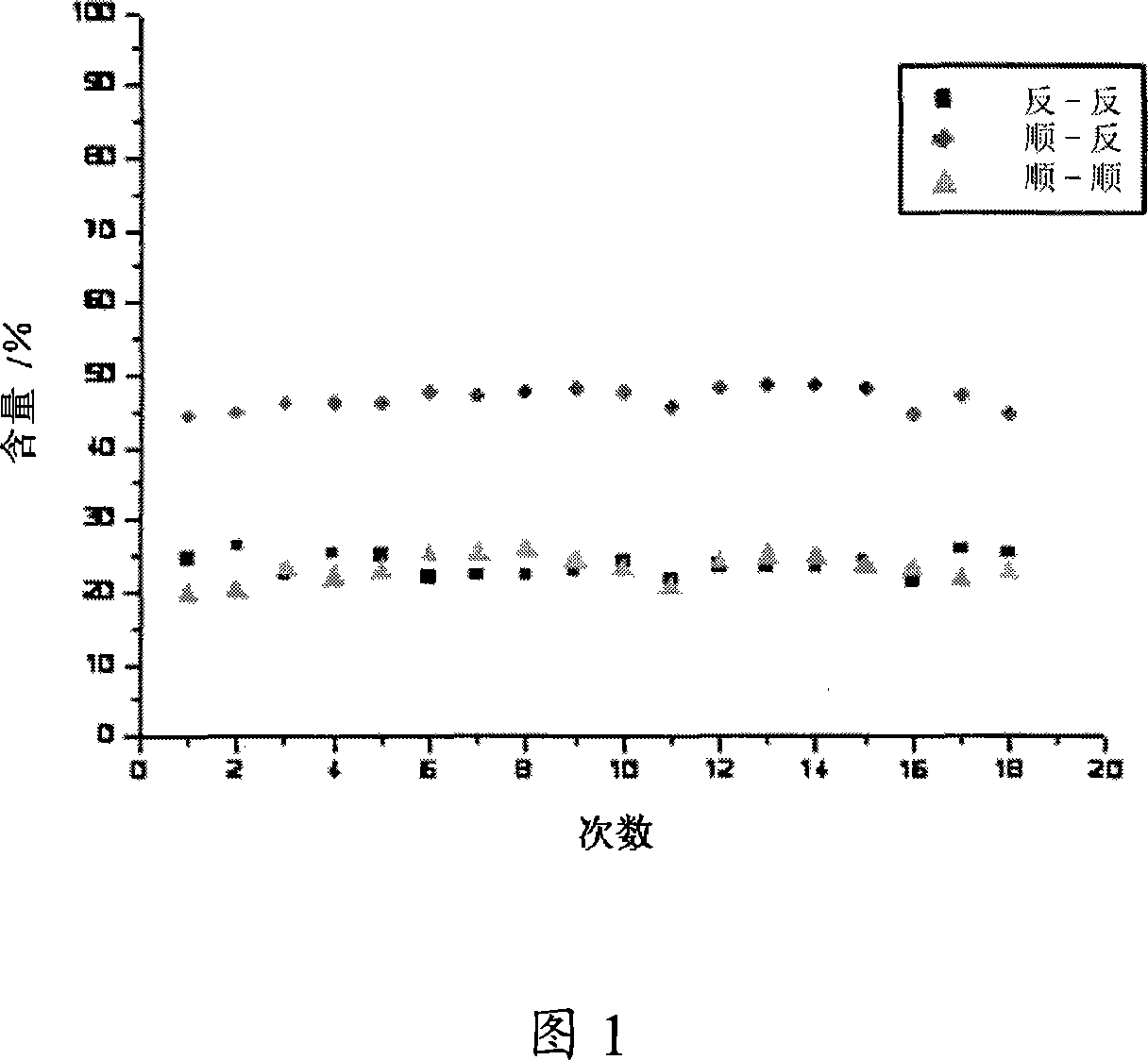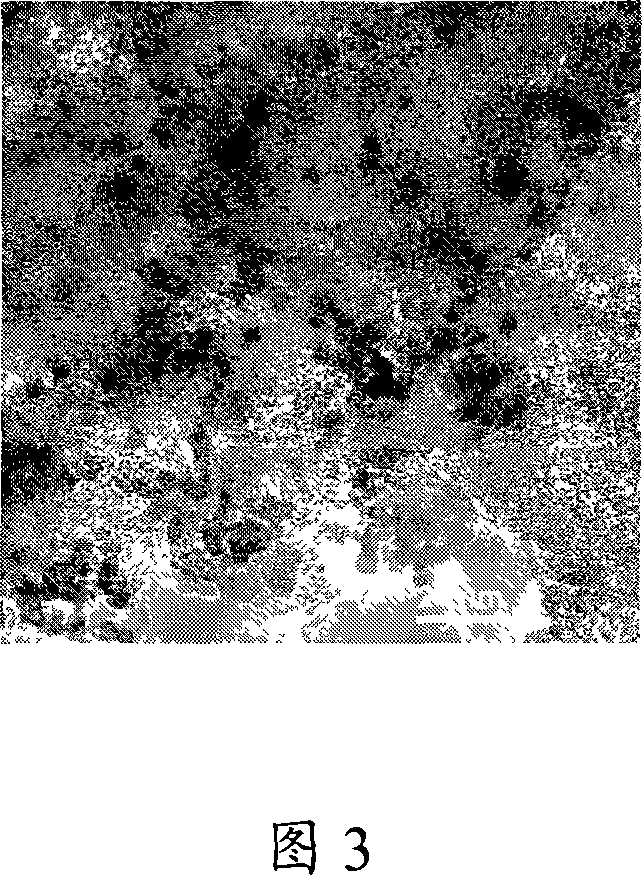Method for producing H12MDA through hydrogenation reaction
A hydrogenation reaction, MDA technology, applied in the preparation of amino compounds, chemical instruments and methods, preparation of organic compounds, etc., can solve the problems of difficult product separation and reuse of sol catalysts, and achieve easy regeneration, high activity and durability. Effect
- Summary
- Abstract
- Description
- Claims
- Application Information
AI Technical Summary
Problems solved by technology
Method used
Image
Examples
Embodiment 1
[0057] Preparation of catalyst 1
[0058] 0.1g Ru(NO 3 ) 3 Dissolve in 50mL of water, add 3.9mL of 5g / L Tween20 (manufactured by DuPont) solution to Ru(NO 3 ) 3 In the aqueous solution, stir for 1h, add 4.5g / L NaBH dropwise 4 Aqueous solution of 40mL, after the reduction is completed, a metal ruthenium colloid protected by Tween20 is obtained. Then add 2 g of activated carbon, stir for 2 hours, filter and wash with water to prepare a 3% Ru / C catalyst. The average particle size of the metallic ruthenium colloidal particles measured by the HRTEM method (dispersed in ethanol, measured by copper mesh) is 3 nm. The loading rate of ruthenium metal on the carrier reaches 99.8%.
Embodiment 2
[0060] Preparation of catalyst 2
[0061] 0.1gRuCl 3 3H 2 O is dissolved in 50mL water, and 5mL of 5g / L Span20 (manufactured by DuPont) solution is added to RuCl 3 In the aqueous solution, stir for 1h, add 4.5g / L NaBH dropwise 4 Aqueous solution of 40mL, after the reduction is completed, a metal ruthenium colloid protected by Span20 is obtained. Then add 2 g of activated carbon, stir for 2 hours, filter and wash with water to prepare a 3% Ru / C catalyst. The average particle size of the metallic ruthenium colloidal particles measured by the HRTEM method (dispersed in ethanol, measured by copper mesh) is 3.2 nm. The loading rate of metal ruthenium on the carrier reaches 100%.
Embodiment 3
[0063] Preparation of catalyst 3
[0064] 0.2589g of ruthenium acetate was added to 400mL water with 0.2732g Span20 and 0.1943g Tween20 dissolved. Add 0.1374g NaBH dropwise under vigorous stirring 4 After the reduction is completed, the metal ruthenium colloid protected by Span20 and Tween20 is obtained. 2 g of activated carbon was added to the colloidal solution, stirred for 1.5 hours, filtered and washed with water, and rinsed with THF to prepare a 5% Ru / C catalyst. The average particle size of the metallic ruthenium colloidal particles measured by the HRTEM method (dispersed in ethanol, copper mesh) is 2.8 nm. The loading rate of metal ruthenium on the carrier reaches 100%.
PUM
| Property | Measurement | Unit |
|---|---|---|
| The average particle size | aaaaa | aaaaa |
| The average particle size | aaaaa | aaaaa |
| The average particle size | aaaaa | aaaaa |
Abstract
Description
Claims
Application Information
 Login to View More
Login to View More - Generate Ideas
- Intellectual Property
- Life Sciences
- Materials
- Tech Scout
- Unparalleled Data Quality
- Higher Quality Content
- 60% Fewer Hallucinations
Browse by: Latest US Patents, China's latest patents, Technical Efficacy Thesaurus, Application Domain, Technology Topic, Popular Technical Reports.
© 2025 PatSnap. All rights reserved.Legal|Privacy policy|Modern Slavery Act Transparency Statement|Sitemap|About US| Contact US: help@patsnap.com



